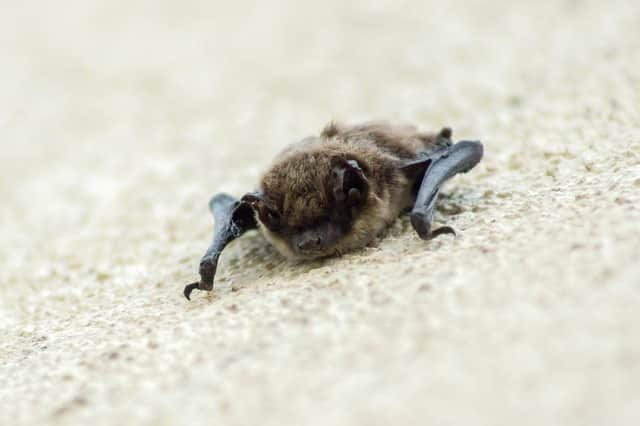NATURE NOTES: The fascinating way that bats find their food


Contrary to popular belief, bats can see to some degree but they are the main group of animals able to exploit a unique food supply - nocturnal insects.
Most bats measure the location of objects by measuring the time delay between emitting the sound and receiving the "echo”. A hunting bat starts with general pulses to avoid objects and find prey, but as they get closer to an object their call rate speeds up.
Advertisement
Hide AdAdvertisement
Hide AdThey measure the distance of an object in three planes: distance, via the volume of the call; on the vertical plane through a special organ called the tragus; and the horizontal plane through difference in time delay between each ear receiving the sound.
In order to detect small targets, bats have to produce very high frequency sounds, because the wavelength of high frequency sounds is also small.
As sound at any frequency spreads spherically away from its source, and the waves produced are so "small” in length, the sound waves do not travel very far – this means that bat calls have to be very loud in order for them to receive any sound back at all.
It is perhaps useful for humans that bat sounds are outside human hearing - the volume is louder than a jet engine, so when emitting their sound, most bats have to close off part of their ear in order not to be deafened.
Advertisement
Hide AdAdvertisement
Hide AdMany bats do not get minute detail about their prey as the doppler effect means the call they receive back may not be optimal quality. (To experience the doppler effect in action, listen to the pitch of an emergency vehicle as it passes, being sure not to create an emergency incident in order to experience the doppler effect, since this may require some explaining).
Horseshoe bats have evolved slightly differently – they can maintain optimal frequency of the calls they receive to get minute detail about their prey, including its shape and furriness.
They do this by lowering the frequency of their calls as they get closer to the target, so that the sound they receive back is within a very small range which is optimal frequency – this is called doppler shift compensation.
By contrast, those long eared bats have such long ears because they can hear insects without echolocating, which is why they can crawl around on the ground to catch food.
Advertisement
Hide AdAdvertisement
Hide AdWhen resting, these bats tuck their long ears under their wings.
Still further evolutionary adaptations in prey species have evolved, aside from evolving the ability to "hear” bats and attempt to drop to the ground. To avoid being detected, tiger moths make their own clicking sound to confuse the bat, while others flutter erratically.
These sounds which bats make can be detected with a bat detector, which detects the different frequencies and patterns of bat sounds – pipistrelles sound like fast “wet slaps”, Daubenton’s sound like a Geiger counter and noctule bats sound like a "chop” “chop” noise.
Help our bats even further by making your garden great for wildlife, or volunteering, joining or donating to help one of our wildlife organisations, such as the Bat Conservation Trust, Vincent Wildlife Trust, National Trust, RSPB or Northumberland Wildlife Trust.